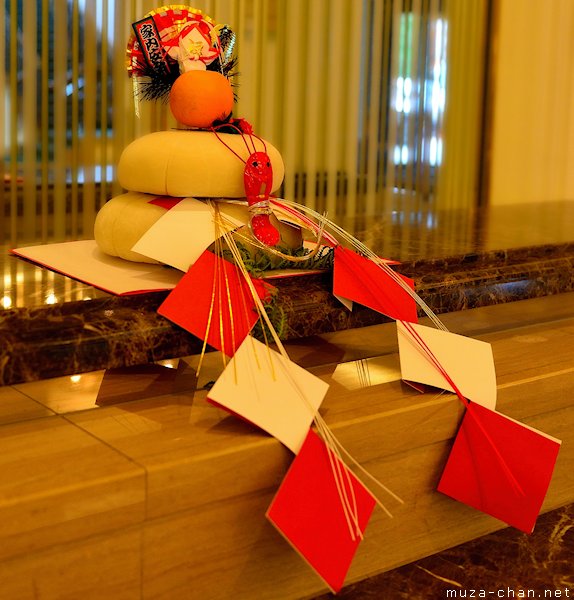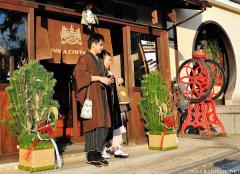Decorating the house for the Shogatsu celebration is a very old and well-preserved Japanese tradition. Besides the shimekazari and kadomatsu decorations, which are displayed on the outside to protect the house and to welcome the New Year’s kami, a different, more unusual kind of ornament is exhibited inside the house, in kamidana, in tokonoma or simply on a table or desk.
Called kagamimochi, it consists in two mochi (Japanese rice cakes) placed on top of each other, with a daidai bitter orange on top. Its symbolism is complex, the mochi is an offering to kami and because it is made of pure rice it can be inhabited by toshigami, the god of the New Year, who brings prosperity and good luck. Also, the daidai signifies the continuity of the family over the years.
Photographed here is one of the most elaborate kagamimochi I have seen, with shide (zigzag-shaped paper streamer used in Shinto purification rituals), pine twigs and a lobster, which is a symbol of extreme old age (because the lobster’s body is leaning like the body of an old man)…
EXIF Info:
|
Yesterday’s Japan Photo:Japanese New Year Decoration, Kadomatsu |



